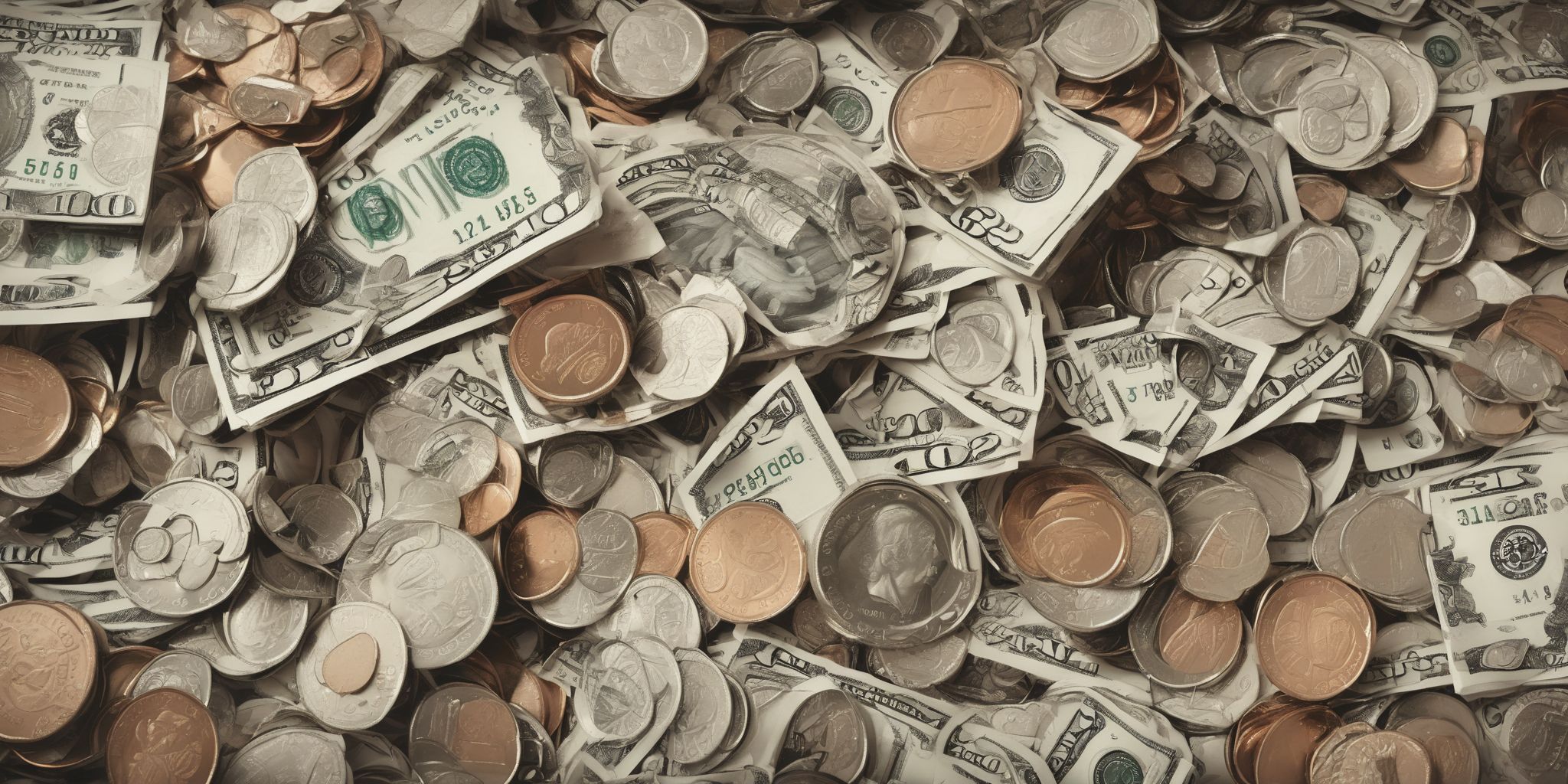Preparing for Rainy Days: Strategies to Save Money for Emergencies
Life is a whirlwind of unpredictable events, occasionally leaving us drenched by unexpected rainstorms. Whether it's a sudden car breakdown, a medical emergency, or a job loss, these rainy days can soak us with worries if we are unprepared. But fear not, for in the realm of personal finance, there exists a trusted umbrella called an emergency fund.
A carefully crafted reservoir of savings, the emergency fund serves as a shield for life's downpours, providing us with peace of mind and a safety net when we need it most.
In this article, we will dive into the art of preparing for rainy days, exploring a range of strategies to save money for emergencies. So grab your rain boots and let's embark on a journey to fortify your financial well-being like a champion of preparedness!
Understanding the Need for Emergency Funds
Understanding the Need for Emergency Funds is an important step towards financial stability. Life is unpredictable, and unexpected expenses can arise at any time. Having an emergency fund provides a safety net to cover these expenses without resorting to credit cards or loans. It helps avoid high-interest debt and financial stress.
For example, imagine your car breaks down and requires immediate repairs. If you don't have an emergency fund, you might struggle to pay for repairs, impacting your daily life and potentially leading to further financial difficulties. By understanding the need for emergency funds, you can prioritize saving and protect yourself from unexpected financial setbacks.
The Importance of Saving Money for Rainy Days
Saving money for rainy days is a smart financial practice that provides stability during unexpected times. Emergencies such as medical bills, car repairs, or sudden job loss can happen to anyone, making it crucial to have a financial safety net. Having savings for rainy days allows you to handle these unforeseen expenses without going into debt or relying on high-interest loans. It also provides peace of mind, knowing that you have a financial cushion to fall back on.
For example, if your car breaks down, you can comfortably pay for repairs without disrupting your monthly budget. By consistently saving a portion of your income, you can build a solid emergency fund and be prepared for any unforeseen circumstances.
Setting Financial Goals
Assessing Your Current Financial Situation
Assessing your current financial situation is a crucial step in saving money for rainy days. Take a close look at your income, expenses, and debt to get a clear picture of where you stand. Calculate your monthly income after taxes and subtract your fixed expenses like rent, utilities, and loan payments. Identify areas where you can cut back on discretionary spending, such as dining out or entertainment. Consider negotiating better deals on recurring expenses like insurance or phone plans.
By understanding your financial position, you can make informed decisions about how much you can save and where you can make adjustments to reach your goals.
Determining the Ideal Emergency Fund Size
Determining the ideal size of your emergency fund is a vital step in saving money for rainy days. Consider your monthly expenses as a starting point to calculate the target amount. Experts often recommend stashing away three to six months' worth of living expenses.
For example, if your monthly expenses total $3,000, aim for an emergency fund of $9,000 to $18,000. However, factors like job stability, dependents, and unique circumstances may require adjusting this target. If you have uncertain employment or additional responsibilities, lean towards saving a larger amount. Remember, your emergency fund should cover unexpected expenses and provide a financial cushion during emergencies.
Breaking Down Your Savings Goals
Breaking down your savings goals is an important step in preparing for rainy days. Start by assessing your current financial situation, including income, expenses, and debt.
Next, determine the ideal size of your emergency fund based on your lifestyle and financial obligations. Break down this target amount into smaller, manageable milestones.
For example, if your goal is to save $6,000 in a year, aim for $500 a month. Adjust your budget to allocate a specific portion of your income towards savings each month. By breaking down your savings goals, you can track your progress and stay motivated along the way.
Creating a Realistic Budget
Analyzing Your Income and Expenses
Analyzing your income and expenses is a vital step in saving money for rainy days. Start by examining your monthly income, including all sources such as salary, side hustles, or investments. Then, scrutinize your expenses, categorizing them into fixed and variable costs. Look for areas where you can cut back or reduce spending, such as dining out less frequently or shopping for discounts on groceries.
Consider tracking your expenses using budgeting tools or apps to gain a better understanding of your spending habits. By analyzing your income and expenses, you can identify areas to save more and allocate funds towards your emergency fund.
Identifying Areas for Cost Reduction
Identifying areas for cost reduction is an important step in saving money for rainy days. Start by evaluating your monthly expenses and look for opportunities to cut back. Consider reducing discretionary spending, such as dining out or entertainment, by finding more affordable alternatives. Look for ways to save on necessities, like shopping for generic brands or using coupons.
Additionally, analyzing your bills and negotiating with service providers can often lead to cost savings.
For example, you could explore options for bundling services or switching to cheaper plans. Being mindful of your spending habits and making small adjustments can add up to significant savings over time.
Automating Your Savings
Automating your savings is a practical way to consistently set aside money for rainy days. By setting up automatic transfers from your checking account to a designated savings account, you can ensure regular contributions without the need for constant manual effort. This method helps you avoid the temptation to spend the money earmarked for emergencies.
For example, you can schedule automatic monthly transfers to coincide with your payday. By making it a habit, saving becomes effortless and you are more likely to reach your financial goals. Remember, consistency is key when it comes to building your emergency fund.
Saving Money for Rainy Days
Building an Emergency Fund
When it comes to saving money for rainy days, building an emergency fund is a crucial step. Here are some practical and actionable tips to help you get started:
- Start small: Begin by setting aside a small amount each month, even if it's just $20 or $50, to gradually build your emergency fund.
- Make it a priority: Treat your emergency fund contributions as a monthly expense, just like paying bills or rent.
- Cut unnecessary expenses: Look for areas where you can reduce spending, such as eating out less or canceling unused subscriptions, and redirect those savings towards your emergency fund.
- Save windfalls and bonuses: When you receive unexpected money, like a tax refund or a work bonus, consider putting a portion of it into your emergency fund.
- Keep it separate: Open a separate savings account specifically for your emergency fund to avoid dipping into it for non-emergency purposes.
By implementing these strategies, you can steadily grow your emergency fund and be better prepared for any unexpected financial hardships that may arise.
Choosing the Right Savings Account
Choosing the right savings account is an important step when saving money for rainy days. Look for accounts that offer competitive interest rates to maximize your savings. Consider factors such as fees, minimum balance requirements, and accessibility to ensure it aligns with your needs. Online savings accounts often provide higher interest rates and lower fees compared to traditional banks.
Additionally, some accounts offer features like automatic savings transfers or separate sub-accounts for specific goals. Research different options, compare their benefits, and choose an account that suits your financial goals and preferences. Remember, selecting the right savings account can make a significant difference in the growth of your emergency fund.
Strategies to Boost Your Savings
To boost your savings for rainy days, consider implementing these strategies:
- Trim unnecessary expenses: Analyze your spending habits and identify non-essential items or services that can be cut back or eliminated.
- Increase income streams: Look for opportunities to generate additional income, such as taking on a side gig or freelance work.
- Automate savings: Set up automatic transfers from your checking to your savings account each month to ensure consistent contributions without relying on willpower alone.
- Take advantage of discounts and deals: Seek out discounts, coupons, and sales to save money on everyday purchases.
- Set specific savings targets: Determine how much you want to save each month and set clear goals to stay motivated.
- Limit impulse spending: Avoid impulsive purchases by implementing a waiting period before buying non-essential items.
- Make use of cashback apps and rewards programs: Earn cashback or rewards on your purchases, and put those saved earnings directly into your emergency fund.
- Reduce utility bills: Conserve energy by using energy-efficient appliances, turning off lights when not needed, and adjusting thermostat settings.
Remember, small savings add up over time. By implementing these strategies consistently, you can build a strong financial safety net for unexpected expenses.
Maximizing Tax-Advantaged Accounts
- Take advantage of retirement accounts such as 401(k)s or IRAs, which offer tax benefits and potential matching contributions from employers.
- Contribute the maximum amount allowed to benefit from tax-free growth and potential tax deductions.
- Consider a Health Savings Account (HSA) for medical expenses, offering triple tax advantages - tax-free contributions, tax-free growth, and tax-free withdrawals for qualified medical expenses.
- Explore other tax-advantaged options like 529 college savings plans or Flexible Spending Accounts (FSAs) for childcare or dependent care expenses.
- Research and understand the contribution limits, eligibility criteria, and withdrawal rules for each account before deciding.
Example: By maximizing your contributions to tax-advantaged retirement accounts, you not only save on taxes but also grow your emergency fund over time. Additionally, if you qualify for an HSA, you can save for medical emergencies with the added benefit of tax advantages. Remember to review the rules and contribution limits for each account to ensure you make the most of these tax-advantaged opportunities.
Evaluating and Adjusting Your Plan
Monitoring and Tracking Your Progress
Monitoring and tracking your progress is an important step in saving money for rainy days. Here are some practical tips to help you stay on top of your financial goals:
- Keep a record of your income and expenses to assess your saving progress.
- Use personal finance apps or spreadsheets to categorize and analyze your spending habits.
- Set milestones and regularly review your emergency fund growth.
- Track your savings rate to ensure you're consistently putting money aside.
- Consider using visual aids, like progress charts, to visually represent your savings goals.
By monitoring and tracking your progress, you can identify areas for improvement and make adjustments to stay on track towards building a strong financial safety net.
Reassessing Your Financial Goals
Regularly reviewing and adjusting your financial goals is essential to ensure your savings plan remains realistic and relevant. Life circumstances change, and what might have been a priority last year may not hold the same weight today. Take the time to evaluate your current situation, including your income, expenses, and any new financial commitments. Consider factors such as changes in job security, family size, or living arrangements that may influence your emergency fund needs.
For example, if you recently purchased a home, you may want to increase your target emergency fund size to account for potential unexpected repairs. Flexibility is key, and adapting your goals will help you stay on track and meet your savings objectives.
Adapting to Changes in Your Circumstances
Life is unpredictable, and financial situations can change unexpectedly. Being flexible and adaptable is crucial when saving money for rainy days. Evaluate your circumstances regularly and adjust your savings plan accordingly.
For example, if you experience a decrease in income, consider reducing non-essential expenses or finding additional sources of income. On the other hand, if you receive a windfall or a raise, resist the temptation to increase your spending and instead allocate the extra funds towards your emergency savings. Being adaptable allows you to stay on track and build a solid financial safety net for any unexpected events that may come your way.
Wrapping up
This article offers practical strategies to help you save money for emergencies. It emphasizes the importance of having a financial safety net to weather unexpected expenses. The strategies include setting clear savings goals, creating a budget, cutting back on unnecessary expenses, automating savings transfers, and diversifying income sources. By following these steps, individuals can better prepare for rainy days and alleviate potential financial stress.


